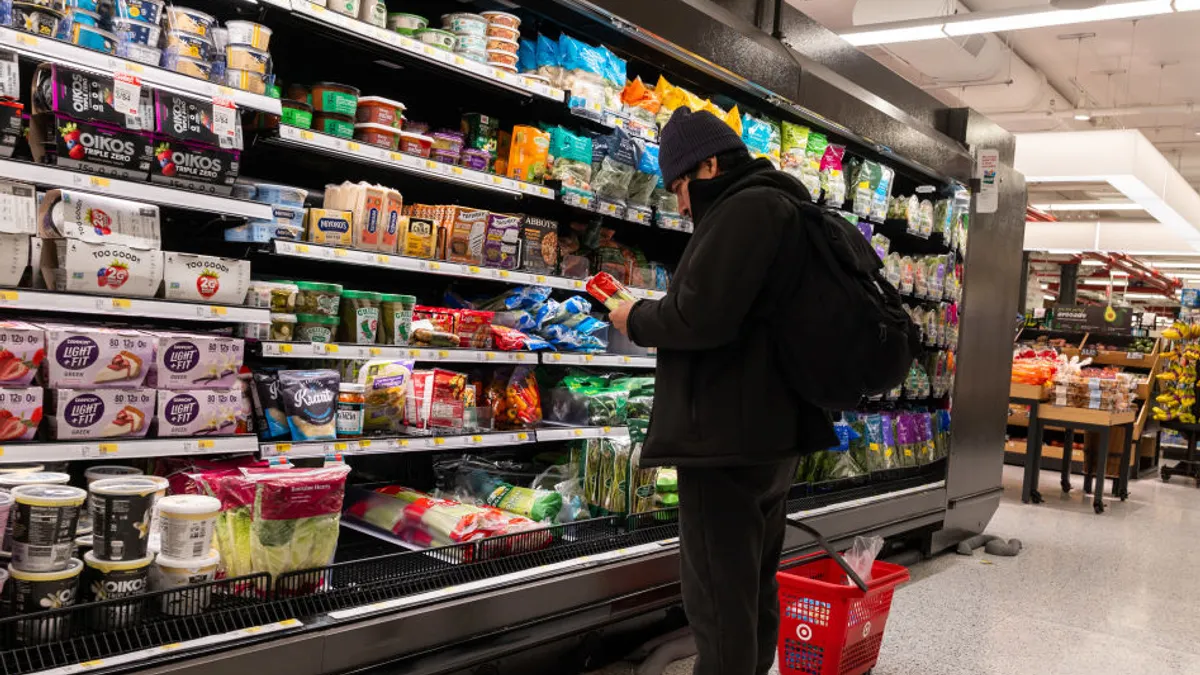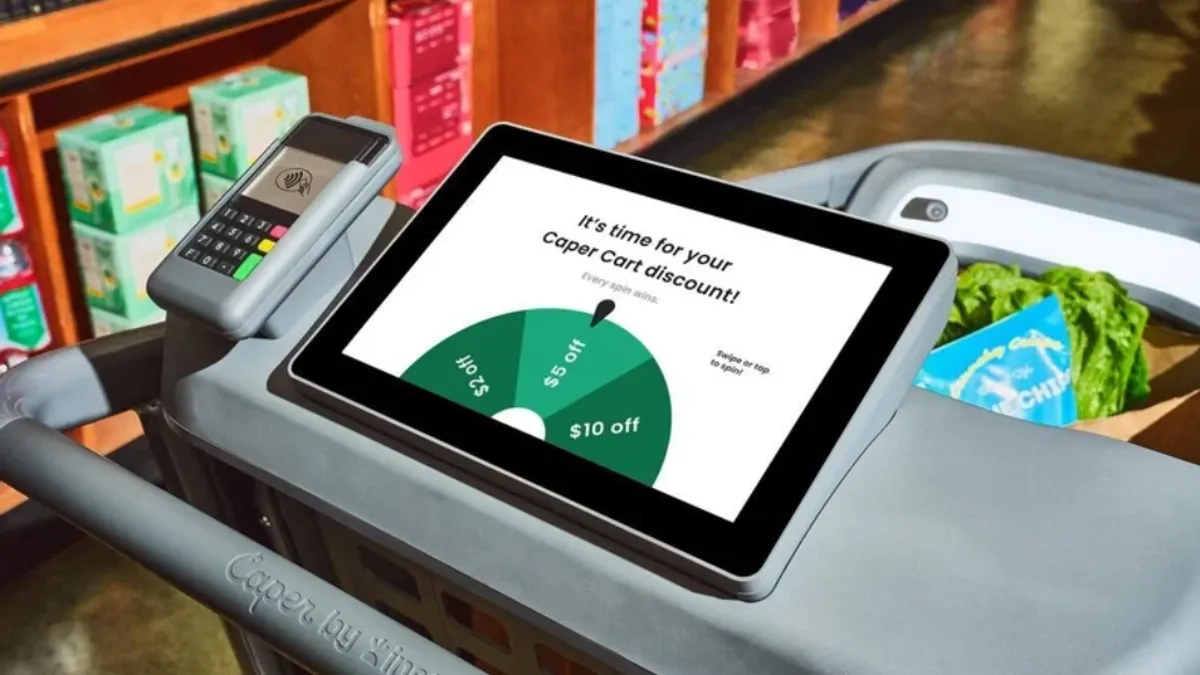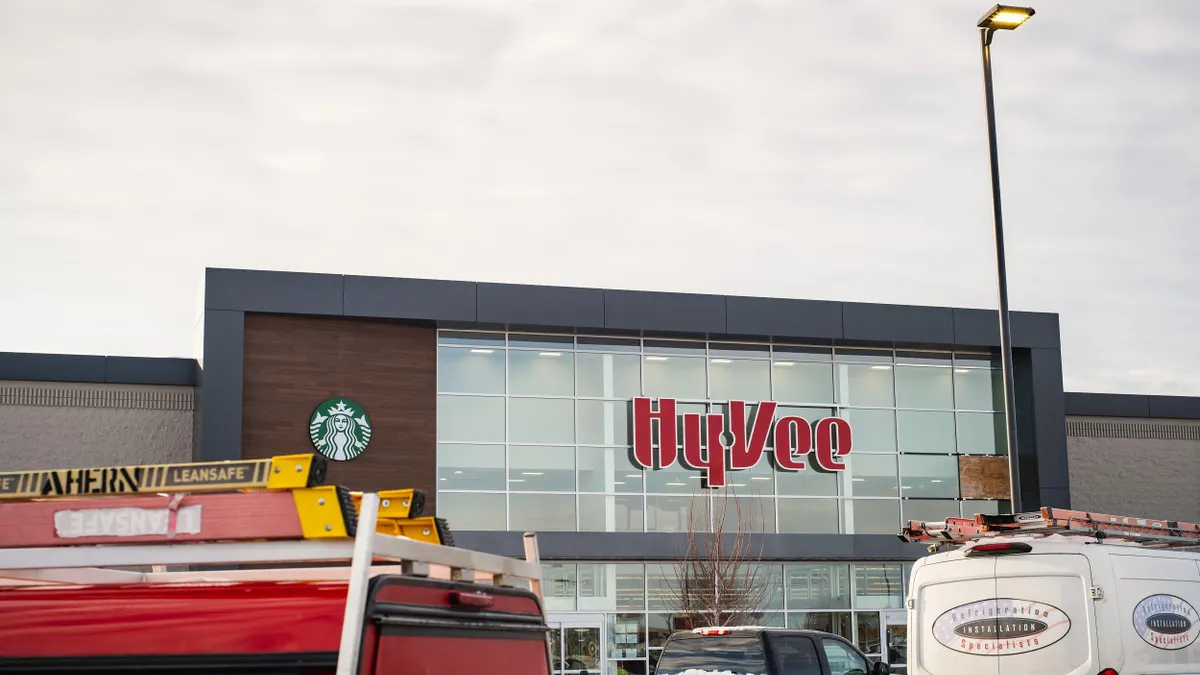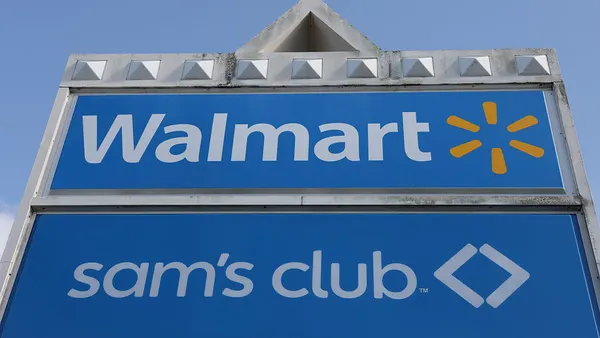Every winter, food retailing executives jet off to a sunny resort city to meet and discuss the most pressing issues facing their industry. Rain and colder-than-average temperatures, unfortunately, greeted conference goers for much of this year's Food Marketing Institute's Midwinter Executive Conference in Miami — a development that seemed appropriate, in one way, given the dark clouds hanging over the industry.
But the gloomy weather didn't put a damper on the lively exchange of ideas. Indeed, whereas last year's conference seemed to focus on the doom and gloom surrounding Amazon's takeover of Whole Foods and the daunting prospect of digital transformation, this year’s conference centered on solutions to the many challenges retailers face.
Here are a few takeaways from Grocery Dive's three days in Miami.
1. Retailers need to experiment more
Amazon is well known as a company that's willing to fail more than it succeeds. It's also a company with an $850 billion market cap, which makes that failure easier to absorb.
Margin-starved supermarkets don't have anywhere near the same capital cushion, but they still need to be willing to experiment more than they currently do, industry experts said.
Reallocation of capital may be in order, according to Justin Dye, leader of New Seasons Market's board of directors and a former executive with Albertsons.
"You have to keep the business running, but if you're not using 20% to 30% of [capital expenditures budget] to find out what's next, you're going to fall behind," he said during a panel discussion.
Tom Furphy, who formerly ran AmazonFresh and is now CEO of product replenishment firm Replenium, said retailers have to be willing to push boundaries.
"You can't just do little incremental tests," he said. “You have to do what makes you uncomfortable.”
Ahold Delhaize has test labs devoted to artificial intelligence and e-commerce, while Walmart runs innovation firms like Store No. 8. But Randy Edeker, CEO of Hy-Vee, said the key is having a culture that encourages trial and error. The Midwestern grocer is currently trialing two new store formats, a digital media channel and a franchise agreement with the Wahlburgers restaurant chain.
"A lot of corporations don't want to fail, us included. But I tell my folks, 'if we're not failing, we're not trying hard enough,'" Edeker told Grocery Dive in an interview.
2. Fresh food is at a tipping point
Fresh perimeter has been the focus of store renovations across the country, with grocers adding everything from walk-in coolers to grab-and-go meal stands over the past few years.
But new data from IRI shows supermarket fresh perimeter sales grew just 1% last year — a far cry from the 5% growth the segment saw back in 2014. Center store, meanwhile — that swath of canned, bagged and boxed goods given up for dead by so many — grew 2%, driven by resurgent categories like frozen food.
That's the first time this decade that center store growth has outpaced fresh at supermarkets.
"2018 was a tipping point for fresh," said Sally Lyons Wyatt, executive vice president with IRI.
Fresh is still popular, Wyatt said, but alternative formats are claiming a growing share of sales as they step up their perishables game. Aldi, which is repositioning its stores around fresh, saw a 6% boost in trips for perishables among consumers surveyed by IRI. Natural Grocers and Sprouts Farmers Market saw fresh perimeter trips grow 10% during the same period. Seventy-one percent of those surveyed said they bought fresh items from Walmart.
Wyatt and colleague Jonna Parker, principal with IRI’s Fresh Center of Excellence, also pointed out that perishable departments haven't seen innovations in key categories like deli chicken.
The solution, they said, is not to pull back on fresh but look beyond high-income consumers that are so often the focus of perishables marketing. Young consumers along with middle-class families, they point out, are increasing their spending in fresh and could hold the key to boosting growth.
3. Automation has become "fundamental" to business
With competition intensifying and the economics of the business stressed by investment pressures and declining profits, retailers know something has to give. And that something is increasingly going to become labor, said Sajal Kohli, senior partner with management consulting firm McKinsey & Company.
"We think automation is fundamental to how you have to run the business," he said during the presentation.
From Amazon Go to aisle-scanning robots, the past few months have seen automated technologies take over rote, repetitive tasks formerly assigned to human workers. Distribution centers have undergone a significant shift as well, with sorting and optimizing systems now automated in facilities across the country.
Officials from retailers like Walmart and Schnucks have pointed out that robots aren't taking over human jobs. But with 55% of the supermarket able to be automated, according to McKinsey research, it's only a matter of time before workers start to feel the impact.
And it's not just store jobs. Accounting, payroll, hiring and circular planning are just a few tasks that have already begun to be automated. Sixty to 70% of category managers' current tasks are able to be automated, Kohli noted.
"When you think about automation and technology, you've got to think equally about its impact in home offices as you are about stores and DCs," he said
4. But retailers can't overlook technology's impact on employees and customers
Automation stands to cut loose hundreds of thousands of workers, raising all sorts of ethical, competitive and regulatory concerns for retailers, said Kohli. That's why he urged companies to focus on not just retraining but "re-skilling" employees to fill new roles that support a more efficient, digital-first business.
"We think it's important that you confront this question because if you don’t then someone in the regulatory framework is going to ask you," said Kohli.
Tech roles like software engineers and data scientists are in growing demand for retailers. But the industry struggles to attract those workers, Kohli noted — particularly to non-coastal areas. But funding college education for workers could help fill that need and keep workers from becoming unemployed or migrating into the gig economy.
Recent years have already seen new jobs tied to e-commerce, including order picking and packing, and more new roles, like robot repair will emerge, Kohli said.
At the same time, retailers need to be mindful of the impact automation and other new technologies will have on consumers, said Craig Rosenblum, regional vice president at Inmar.
"We have to make sure we're moving at a pace our shoppers can understand."

Craig Rosenblum
Regional vice president, Inmar
According to an Inmar survey, the majority of consumers (55%) say they have only a basic understanding of retail technology or are suspicious of it. Seventy-four percent say robots can't offer better service than humans, while 59% say facial-recognition technology — an emerging field in retail — is an invasion of privacy.
"In the end, we have to make sure we're moving at a pace our shoppers can understand," Rosenblum said.
5. "It's easy to think about the customer, but harder to think like the customer"
The quote comes from Jim Smits, who has held executive-level positions with Albertsons, H-E-B, Winn-Dixie and Supervalu and now works as vice president of U.S. retailer development for technology firm Retail Solutions Inc. And it reflects not a failing of empathy on the part of retailers, he said, but rather fundamental flaws in how they process data and measure success
Retailers, Smits and others throughout the conference noted, look for sales to improve from one year to the next. But they're too focused on looking backward than on looking ahead to what shoppers want next, meaning they're always scrambling to react. Predictive data, he said, is a technology most retailers aren't using effectively.
"Historically, we've looked at data in the rearview mirror," Smits said.
Chieh Huang, CEO of Boxed, said it's also important to do the basics well, like polling shoppers and staffing category managers who are obsessive about the latest product trends. Online-only Boxed has resonated with millennial consumers, Huang said, in large part because it doesn't overthink the influential demographic.
"We’ve all gone a bit overboard thinking millennials are a different species, but really they just care about slightly different things" like label transparency, Huang said in an interview with Grocery Dive.





















